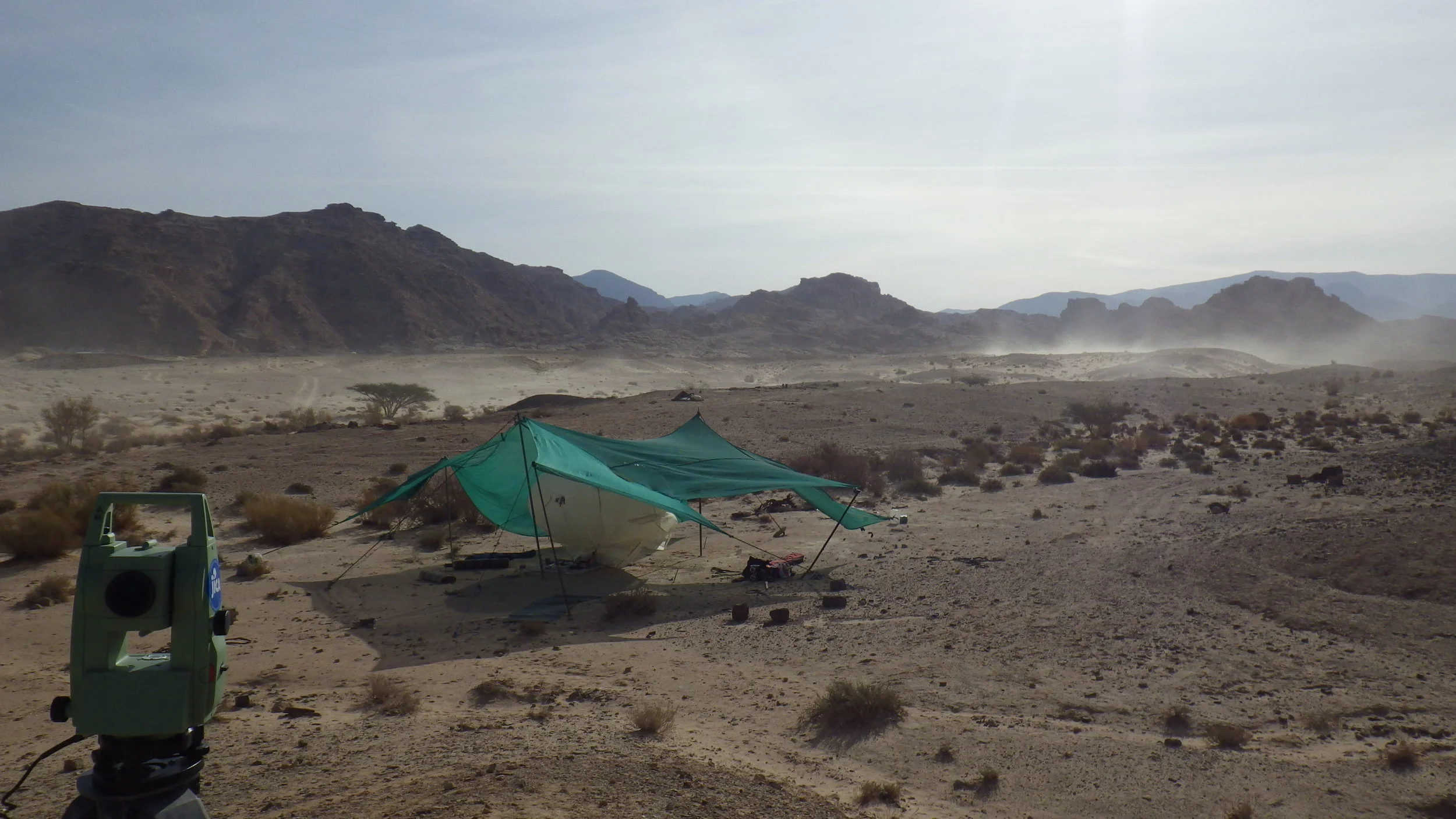al-Humayma
The site of al-Humayma is located ca. 55 km northeast of al-‘Aqaba at the northern edge of the Hisma Desert in southern Jordan. Archaeological investigation of the site began in 1986 and excavations were conducted from 1991-2014 by the Humayma Excavation Project, directed by John P. Oleson and later M. Barbara Reeves. These excavations revealed occupation of the site beginning in the Nabataean period, with a peak during the Roman period, but my work focuses primarily on the Islamic period occupation in Field F103.
Field F103
My work on al-Humayma began with an ACOR-CAORC Postdoctoral Fellowship in summer 2021. This fellowship was dedicated to analysis of the ceramics from the 1992-2002 Humayma Excavation Project excavations in Field F103, identified as the ‘Abbasid family qasr, directed by Rebecca Foote. Although historically most important as the residence of the ‘Abbasid family in the early 8th century AD, ceramic analysis revealed a series of occupations spanning the 8th-11th century, providing considerable insight into the site’s continuing role in regional trade and administration after the ‘Abbasid family’s ascent to the Caliphate in 750. Now that analysis of the ceramics is mostly complete, I plan to complete analysis of other finds and the stratigraphy with the ultimate goal of bringing these important excavations to final publication (planned as Humayma Excavation Project Volume 5: The Qasr and Mosque of the Abbasid Family at al-Humayma).

